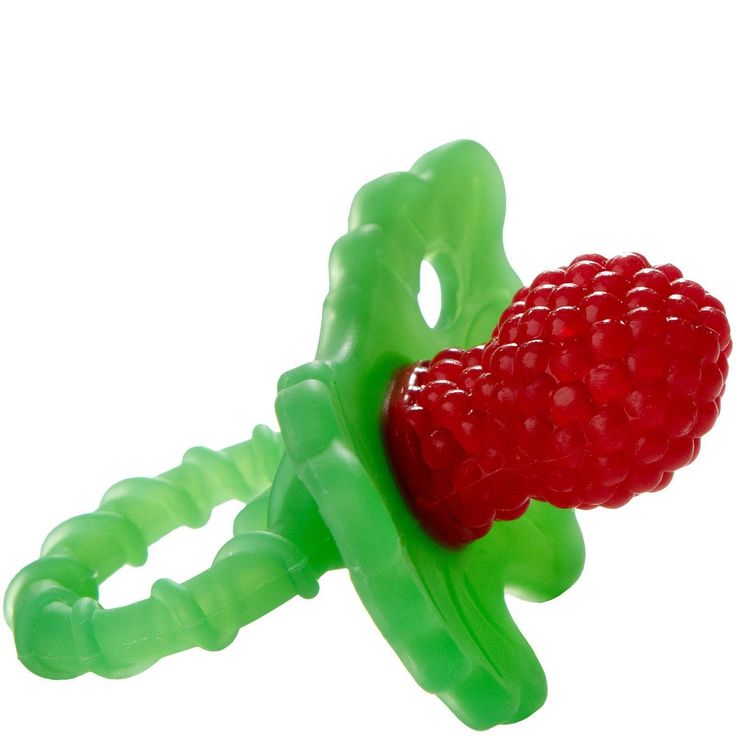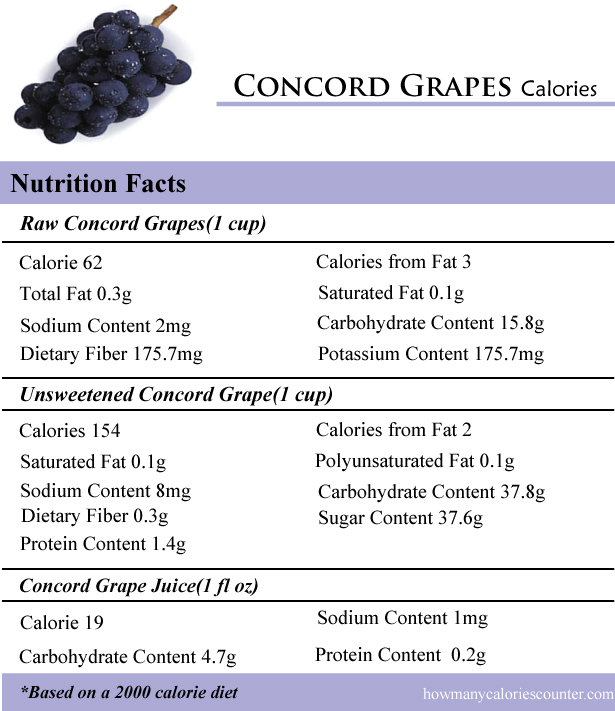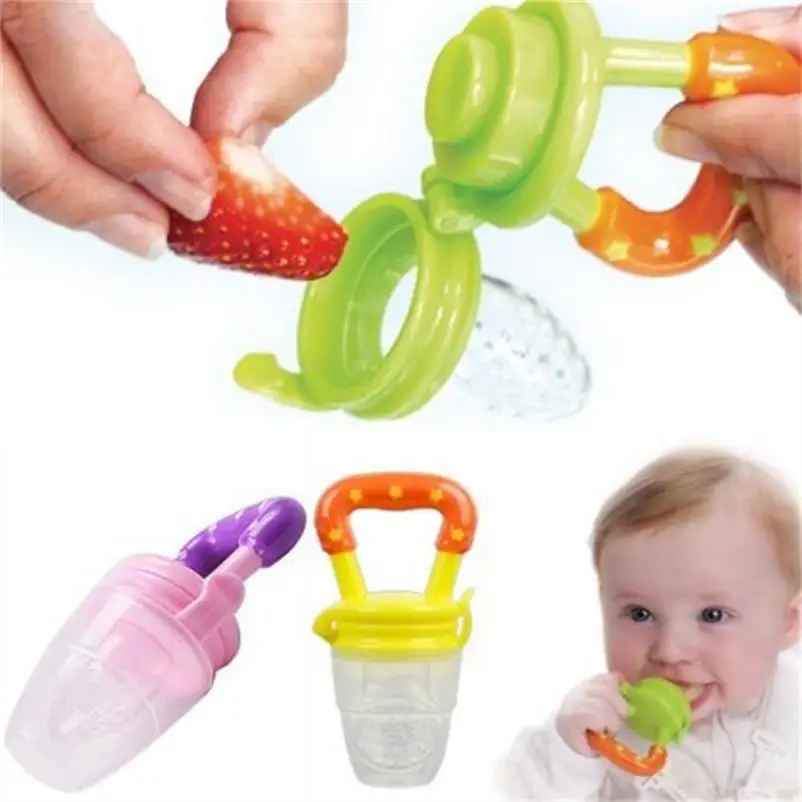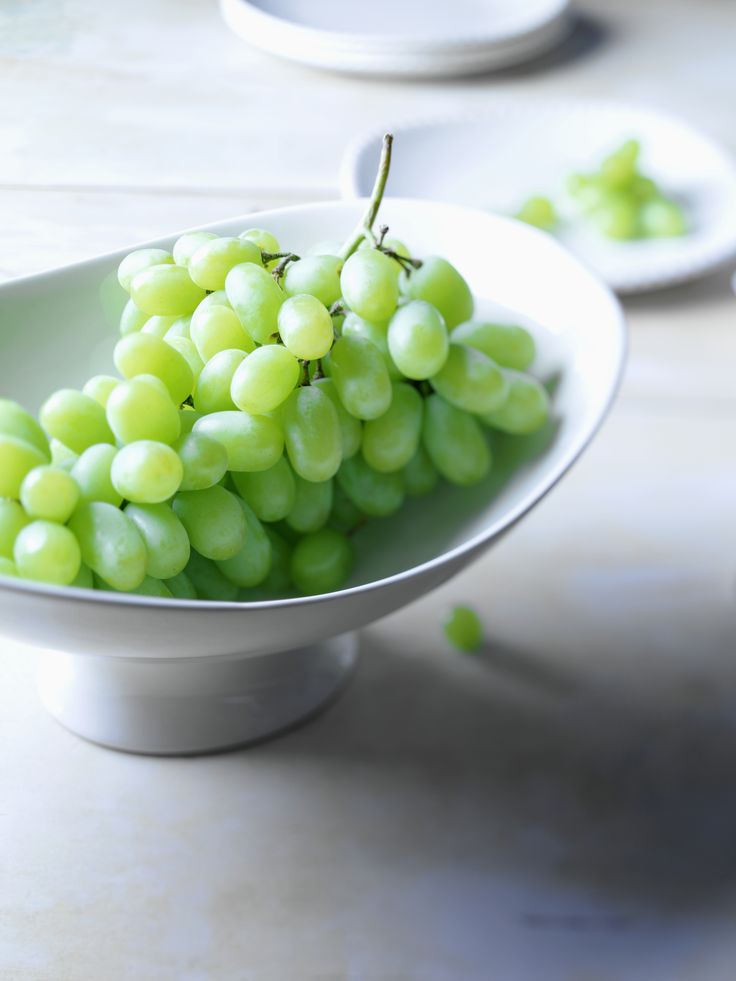Feeding baby grapes
Age, Safety, Risks, Preparing, and More
Grapes are nature’s candy. Succulent and sweet, they make a delicious, pop-able snack, whether red, green, or in between.
Not only are they the so-called fruit of the gods, they’re highly nutritious, too! The juicy little orbs are packed with vitamins C, K, and other antioxidants. People of all ages have been eating grapes since time immemorial — as early as the Neolithic era, according to some research.
If you’re a fruit fan, you likely enjoy eating grapes in cooked dishes or as a solo snack. So when can you introduce them to your child (and how can you do so safely)?
According to the American Academy of Pediatrics (AAP), you can begin feeding your child a variety of solid foods — including grapes, in age-appropriate preparations — around 6 months of age.
And contrary to the advice of bygone years, experts now say there’s no set order in which you should introduce different types of foods, whether fruits, veggies, baby cereals, or anything else.
However, although kids can start most foods from the time they hit the half-year mark, it’s important to ensure they eat every food safely. When it comes to grapes, this means preparing them in the right ways.
The primary safety concern around babies and grapes has to do with choking. Because of their size and shape, grapes can all too easily slide down a small child’s windpipe, blocking airflow.
For this reason, it’s critical to serve grapes the right way for babies and toddlers. (We’ll explain how below.)
Some little ones, depending on their number of teeth and chewing savvy, may also have trouble chewing through grape skin.
This may not be a matter of safety, per se, but it can make for a messy, unpleasant experience for both parent and child, as grape skins get spat out onto the high chair (or the floor).
Unfortunately, grapes also make the list of the so-called “dirty dozen” — the 12 fruits and veggies with the most exposure to pesticides. Buying organic grapes can help clear up concerns you may have about the harmful effects of chemical pesticides.
Peel me a grape! It’s not just a snarky phrase — it’s actually good advice for parents of infants.
For younger babies who haven’t yet developed their chewing skills or the pincer grasp (which typically shows up around 9 or 10 months), it’s best to spoon-feed peeled grapes, either sliced into quarters or blended.
These preparation methods will not only minimize choking hazards, they’ll save frustration for babies who can’t pick up grape pieces to feed themselves.
As your child grows (and reaches the crucial pincer grasp phase) you can let them self-feed unpeeled grapes cut up into quarters. This can be a fun and effective part of baby-led weaning.
Then, as they near their second birthday, try offering grapes sliced in half lengthwise, keeping a watchful eye for signs of choking.
When to dive in and give your kiddo the whole fruit? Some experts caution against giving children whole grapes until the age of 2. Talk with your pediatrician about your child’s developmental readiness for the unsliced version before their second birthday.
Cutting grapes the right way boils down to making them narrow and thin. This way, even if — heaven forbid — a piece of grape goes down unchewed, it won’t cut off baby’s ability to breathe.
For children with a pincer grasp who can feed themselves, start by cutting grapes into quarters. Then, when you’re ready to provide baby with a little extra edible challenge (closer to age 2), slice grapes in half lengthwise, from the stem side to the bottom.
If using grapes with seeds, be sure to remove them before placing the fruit in front of your child.
Grapes offer commendable nutrition to include in your growing baby’s healthy diet.
One-half cup of red grapes provides 9 milligrams of vitamin C — 23 percent of the daily requirement for infants 0 to 6 months and 18 percent for babies 6 to 12 months.
This important nutrient supports the immune system and enhances iron absorption. Plus, as an antioxidant, it protects baby’s cells from damaging free radicals (as do multiple other flavonoids in grapes’ skins).
An abundance of vitamin K also contributes to baby’s health by helping blood to clot. Since this vitamin is fat-soluble, it requires dietary fat for absorption. Try serving with grapes with peanut or almond butter for a yummy, nutritious combo.
Ready to get your grape on? Try these simple recipes for your little fruit eater:
- Grape sorbet (6 months and older). Freeze 3 cups of red or green grapes in a single layer on a baking sheet. Place frozen grapes in the bowl of a food processor with a splash of lemon or lime juice. Purée until smooth and serve immediately.
- Toddler grape crostini (12 months and older). Slice a whole wheat baguette into bite-sized rounds. On each round, spread a layer of cream cheese and top with quartered grapes.
Although pure grape juice contains many nutrients, it’s not a replacement for the fruit itself.
In fact, because of the risk of cavities and childhood obesity from excess sugar, the AAP now recommends babies under age 1 drink no fruit juice, and children ages 1 to 3 have no more than 4 ounces per day.
You can think of grape juice as an occasional treat for your little one, rather than a regular way to fill the bottle.
The last 20 years have seen a remarkable uptick in food allergies.
But although it’s possible to develop an allergy to any food, grapes aren’t among the top eight food allergens (the ones responsible for most allergies).
If you notice your child develops symptoms like a rash, hives, wheezing, runny nose, or upset stomach after eating grapes, talk to your doctor about the possibility of an allergy.
Serving grapes safely to your baby or toddler is critical to prevent choking. But by preparing these tasty fruits in safe ways, you can make a grape lover of your child from a young age.
Age, Safety, Risks, Preparing, and More
Grapes are nature’s candy. Succulent and sweet, they make a delicious, pop-able snack, whether red, green, or in between.
Not only are they the so-called fruit of the gods, they’re highly nutritious, too! The juicy little orbs are packed with vitamins C, K, and other antioxidants. People of all ages have been eating grapes since time immemorial — as early as the Neolithic era, according to some research.
People of all ages have been eating grapes since time immemorial — as early as the Neolithic era, according to some research.
If you’re a fruit fan, you likely enjoy eating grapes in cooked dishes or as a solo snack. So when can you introduce them to your child (and how can you do so safely)?
According to the American Academy of Pediatrics (AAP), you can begin feeding your child a variety of solid foods — including grapes, in age-appropriate preparations — around 6 months of age.
And contrary to the advice of bygone years, experts now say there’s no set order in which you should introduce different types of foods, whether fruits, veggies, baby cereals, or anything else.
However, although kids can start most foods from the time they hit the half-year mark, it’s important to ensure they eat every food safely. When it comes to grapes, this means preparing them in the right ways.
The primary safety concern around babies and grapes has to do with choking. Because of their size and shape, grapes can all too easily slide down a small child’s windpipe, blocking airflow.
For this reason, it’s critical to serve grapes the right way for babies and toddlers. (We’ll explain how below.)
Some little ones, depending on their number of teeth and chewing savvy, may also have trouble chewing through grape skin.
This may not be a matter of safety, per se, but it can make for a messy, unpleasant experience for both parent and child, as grape skins get spat out onto the high chair (or the floor).
Unfortunately, grapes also make the list of the so-called “dirty dozen” — the 12 fruits and veggies with the most exposure to pesticides. Buying organic grapes can help clear up concerns you may have about the harmful effects of chemical pesticides.
Peel me a grape! It’s not just a snarky phrase — it’s actually good advice for parents of infants.
For younger babies who haven’t yet developed their chewing skills or the pincer grasp (which typically shows up around 9 or 10 months), it’s best to spoon-feed peeled grapes, either sliced into quarters or blended.
These preparation methods will not only minimize choking hazards, they’ll save frustration for babies who can’t pick up grape pieces to feed themselves.
As your child grows (and reaches the crucial pincer grasp phase) you can let them self-feed unpeeled grapes cut up into quarters. This can be a fun and effective part of baby-led weaning.
Then, as they near their second birthday, try offering grapes sliced in half lengthwise, keeping a watchful eye for signs of choking.
When to dive in and give your kiddo the whole fruit? Some experts caution against giving children whole grapes until the age of 2. Talk with your pediatrician about your child’s developmental readiness for the unsliced version before their second birthday.
Cutting grapes the right way boils down to making them narrow and thin. This way, even if — heaven forbid — a piece of grape goes down unchewed, it won’t cut off baby’s ability to breathe.
For children with a pincer grasp who can feed themselves, start by cutting grapes into quarters. Then, when you’re ready to provide baby with a little extra edible challenge (closer to age 2), slice grapes in half lengthwise, from the stem side to the bottom.
Then, when you’re ready to provide baby with a little extra edible challenge (closer to age 2), slice grapes in half lengthwise, from the stem side to the bottom.
If using grapes with seeds, be sure to remove them before placing the fruit in front of your child.
Grapes offer commendable nutrition to include in your growing baby’s healthy diet.
One-half cup of red grapes provides 9 milligrams of vitamin C — 23 percent of the daily requirement for infants 0 to 6 months and 18 percent for babies 6 to 12 months.
This important nutrient supports the immune system and enhances iron absorption. Plus, as an antioxidant, it protects baby’s cells from damaging free radicals (as do multiple other flavonoids in grapes’ skins).
An abundance of vitamin K also contributes to baby’s health by helping blood to clot. Since this vitamin is fat-soluble, it requires dietary fat for absorption. Try serving with grapes with peanut or almond butter for a yummy, nutritious combo.
Ready to get your grape on? Try these simple recipes for your little fruit eater:
- Grape sorbet (6 months and older).
 Freeze 3 cups of red or green grapes in a single layer on a baking sheet. Place frozen grapes in the bowl of a food processor with a splash of lemon or lime juice. Purée until smooth and serve immediately.
Freeze 3 cups of red or green grapes in a single layer on a baking sheet. Place frozen grapes in the bowl of a food processor with a splash of lemon or lime juice. Purée until smooth and serve immediately. - Toddler grape crostini (12 months and older). Slice a whole wheat baguette into bite-sized rounds. On each round, spread a layer of cream cheese and top with quartered grapes.
Although pure grape juice contains many nutrients, it’s not a replacement for the fruit itself.
In fact, because of the risk of cavities and childhood obesity from excess sugar, the AAP now recommends babies under age 1 drink no fruit juice, and children ages 1 to 3 have no more than 4 ounces per day.
You can think of grape juice as an occasional treat for your little one, rather than a regular way to fill the bottle.
The last 20 years have seen a remarkable uptick in food allergies.
But although it’s possible to develop an allergy to any food, grapes aren’t among the top eight food allergens (the ones responsible for most allergies).
If you notice your child develops symptoms like a rash, hives, wheezing, runny nose, or upset stomach after eating grapes, talk to your doctor about the possibility of an allergy.
Serving grapes safely to your baby or toddler is critical to prevent choking. But by preparing these tasty fruits in safe ways, you can make a grape lover of your child from a young age.
At what age can grapes be given to a child
Published: Updated: Heading: HealthAuthor: Vadim
Grapes are a tasty and healthy berry, the medicinal properties of which have been proven for centuries. The fruits are successfully used by adults to treat diseases of the digestive, respiratory, cardiovascular and nervous systems. However, many parents ask themselves the question: “At what age can grapes be given to a child?”. You will find the answer to it in our article. On our website you will find out from how many months you can introduce berries into the diet of babies. However, before you start feeding, read the main benefits of grapes for children, as well as possible negative consequences. nine0007
You will find the answer to it in our article. On our website you will find out from how many months you can introduce berries into the diet of babies. However, before you start feeding, read the main benefits of grapes for children, as well as possible negative consequences. nine0007
Contents
- The composition of microelements and their effect on the child's body
- Useful properties
- Harmful effects
- When can grapes be given to children?
- How and in what quantity can grapes be given to a child?
- Grapes for children video
The composition of trace elements and their effect on the child's body
| Vitamin B | regulates the nervous and circulatory system |
| Vitamin C | improves immunity, protects against viruses, has an antioxidant effect |
| Vitamin D | promotes bone development |
| Zinc, aluminium, copper | increase immunity, influence the proper development of internal organs |
Useful properties
- rich in vitamins, minerals and organic acids that strengthen the whole body; nine0013 contributes to the proper development of the skeletal system in a growing organism;
- strengthens the walls of cerebral vessels and improves mental development;
- helps in the formation of the nervous system;
- maintains tone;
- has a high calorie content, which contributes to the rapid recovery of strength and weight in a weakened body.

provides full growth;
Harmful effects
- contains a lot of carbohydrates, which increases the load on the digestive organs; nine0014
- is capable of causing an allergic reaction;
- organic acids that are part of the berries can damage tooth enamel, so it is recommended to dilute the juice with water and drink through a straw;
- Combining breastfeeding babies with grapes may result in diarrhea and diarrhea;
- accelerates the processes of fermentation in the intestines, which can lead to disruption of the gastrointestinal tract;
- dark varieties are rich in tannins that can cause headaches and migraines, so it is recommended to give preference to light grape varieties; nine0014
- is contraindicated in children prone to diabetes.
When can grapes be given to children?
There is no definite answer to this question. Doctors recommend introducing grapes into the diet gradually, starting from the 2nd year of life..jpg) Stricter doctors allow berries to children no earlier than 3 years of age. It is believed that grapes are contraindicated for a one-year-old child, since the body is not developed enough to digest and assimilate the product. Babies who are breastfed should not be given grapes, as this can cause disruption of the digestive tract. To make sure that grapes can be given to a child, make sure that he does not have diabetes, chronic kidney failure and peptic ulcers. nine0007
Stricter doctors allow berries to children no earlier than 3 years of age. It is believed that grapes are contraindicated for a one-year-old child, since the body is not developed enough to digest and assimilate the product. Babies who are breastfed should not be given grapes, as this can cause disruption of the digestive tract. To make sure that grapes can be given to a child, make sure that he does not have diabetes, chronic kidney failure and peptic ulcers. nine0007
How and in what quantity can grapes be given to a child?
To find out if you can start fertilizing with grapes at 1 year, carefully read the following recommendations. For the first time, children are given a few drops of juice, while being carefully monitored so that the child does not develop an allergy to grapes or diarrhea. With good tolerance, the dosage is increased to 35 g.
From the second year, you can start feeding whole berries. At the first feeding, the child is given grapes in an amount of no more than two to three berries. To do this, they need to be washed well, since the skin contains a large amount of dirt and harmful chemicals that gardeners often treat the plant with. If desired, you can blanch the berries by dousing them with boiling water to completely destroy infections. After that, the skin is peeled, as the digestive system is still too weak to digest fiber. It is best to choose sultana grapes that do not contain seeds. Otherwise, you will have to extract them yourself. This is done because many children under 3 years of age cannot spit out the bones, and if they swallow them, they can harm themselves. nine0007
To do this, they need to be washed well, since the skin contains a large amount of dirt and harmful chemicals that gardeners often treat the plant with. If desired, you can blanch the berries by dousing them with boiling water to completely destroy infections. After that, the skin is peeled, as the digestive system is still too weak to digest fiber. It is best to choose sultana grapes that do not contain seeds. Otherwise, you will have to extract them yourself. This is done because many children under 3 years of age cannot spit out the bones, and if they swallow them, they can harm themselves. nine0007
Berries must be ripe and fresh. They are not compatible with carbonated drinks, dairy products and kvass. Keep track of how many berries you gave your baby and what the consequences of feeding are. Otherwise, the use of grapes by children should be excluded for a while.
Children 1 to 3 years of age are recommended to be fed grapes between meals, eg at noon. The high calorie content of grapes makes it an excellent afternoon snack, capable of replacing sandwiches or sweets in terms of its nutritional properties. nine0007
nine0007
During the summer period it is recommended to give fresh berries, and in winter as juice or compote. Freshly squeezed juice is diluted with water in a ratio of 1:1 to reduce the impact on the gastric mucosa. Ripe berries are given to children 2-3 times a week. They are often used to make desserts and confectionery dishes loved by children. You can give two-year-old children raisins and decoctions from it.
Now you know when you can give your child grapes and how safe it is for his health. When choosing at what age to start additional feeding with berries, consider the recommendations of doctors and advice as a precaution. nine0007
Grapes for children video
Grapes while breastfeeding
Contents
products. Nutritionists during lactation recommend expanding the diet to include more fruits and vegetables. Often on forums on the Internet, questions are asked whether it is possible to eat grapes while breastfeeding. Let's figure it out. nine0122
Often on forums on the Internet, questions are asked whether it is possible to eat grapes while breastfeeding. Let's figure it out. nine0122
Grapes are very healthy! Grape fruits contain sugar, fiber, essential amino acids, ascorbic acid, vitamins A, B, E, P, K, folic acid, pectin, calcium, zinc, magnesium, selenium, potassium, enzymes. Grapes improve blood composition, increase hemoglobin levels. Berries or red grape juice is an effective treatment for many diseases of the cardiovascular system. Grapes help the liver cleanse the body of accumulated toxins. It supports immunity, normalizes cholesterol levels, has antiviral properties and prevents vision loss. Folic acid, vitamins P and K are directly involved in hematopoiesis and help nursing mothers cope with postpartum anemia, insomnia and constipation. Antioxidants in its composition remove toxic free radicals, slow down the aging process, activate the reparative function and eliminate fatigue.
And it can bring many more - many benefits ... This is just a medicine given to us by generous nature! There is even a special method of treating grapes - ampelotherapy. nine0007
But during the period of breastfeeding, grapes can cause digestive problems for mother and child ...
Video: about the benefits of grapes
But, like any medicine, grapes have their side effects. A high sugar content may not always be beneficial: firstly, grapes are not recommended for people with a predisposition to diabetes, and secondly, grapes (as well as raisins and grape juice) can cause fermentation, increased gas formation, and as a result, pain and discomfort in the intestines of mother and child. nine0007
Breastfeeding mothers must protect themselves from foods that cause a fermentation reaction.
Well, let's not forget about allergies: any person can have an individual intolerance to anything (even apples or buckwheat!)
Grapes and breastfeeding
breastfeeding? There are parents - supporters of grapes, and there are ardent opponents.
On the one hand, the mother's body after childbirth needs to recuperate, it is exhausted by a long pregnancy. Not all women easily endure this period, chronic diseases can worsen, postpartum anemia (lack of hemoglobin in the blood), postpartum depression and loss of strength can manifest itself. Here grapes would come in handy!
On the other hand, a breastfeeding mother is a direct food provider for her baby. What she uses is what gets into the body of the baby. nine0007
And this is where the difficulties begin: it is highly likely that some time after the mother tastes the grapes, and then breastfeeds the child, he will suddenly begin to cry loudly. He clearly has a stomachache. These are intestinal colic caused by fermentation and gases. Now you need to put the baby on a warm diaper, give him dill water or something more effective, stroke the tummy clockwise until the gases go away ( see article how to help a child with severe colic ). nine0007
We wanted the best, but it turned out. ..
..
Therefore, it is recommended to introduce grapes into the diet after weaning the baby from breastfeeding or after three months after childbirth.
Food diary to help mom
Experience shows that all these troubles usually happen to children from 0 to 3 months.
The child grows, becomes stronger, his intestines work better and more regularly, everything is gradually getting better.
Now you can carefully add to the diet of a nursing mother those foods that had to be abandoned in the first months of feeding: peas, cabbage, radishes (they, like grapes, contribute to increased gas formation), citrus fruits (allergy risk), etc. d. And grapes, too. ( nine0120 See the article what is not recommended to eat for a nursing mother )
But add not immediately and a lot, but a little bit, one new product every 2-3 days, or better - a week. And carefully observe the reaction of the child: are there any allergic rashes, does the baby’s intestines react well to mother’s milk with a new “component”?
It's good if a mother keeps a food diary: what was eaten, when, and how the child reacted.
If after a few days of "innovation" everything is fine, you can introduce the next product into the diet. nine0007
If not, cancel the new product and wait a few days before trying another one. And again, do not be lazy, write everything down.
If you are lucky and the child has not experienced any negative reactions (allergies and colic), relax, eat whatever you want. But - within reason! A little bit of one thing, a little bit of another...
It's important to keep track of how different foods fit together.
If you eat grapes at the same time as other foods, nothing good will come of it. Different products interact with each other in different ways. In no case should you combine grapes with the following products while breastfeeding:
- with other fruits, berries or vegetables;
- with dairy and fermented milk products;
- with meat, especially fatty;
- with pastries;
- with carbonated drinks and kvass.

Better if grapes are a separate food, take a temporary break between them and something else. At least 1.5 - 2 hours. It will turn out more comfortable for you - the nursing mother, and for your child.
And we should not forget that besides grapes, there are many other fruits and vegetables that are good for breastfeeding. These are apples, and carrots, and cucumbers, and turnips, as well as bananas, peaches, apricots, plums ... So, if relations with citrus fruits or grapes do not work out, it does not matter! You will always find something to replace them with. nine0007
Related products for breastfeeding
- Breastfeeding fruits;
- Vegetables for breastfeeding;
- Feeding a nursing mother.
How to choose grapes
[sc:ads ]
